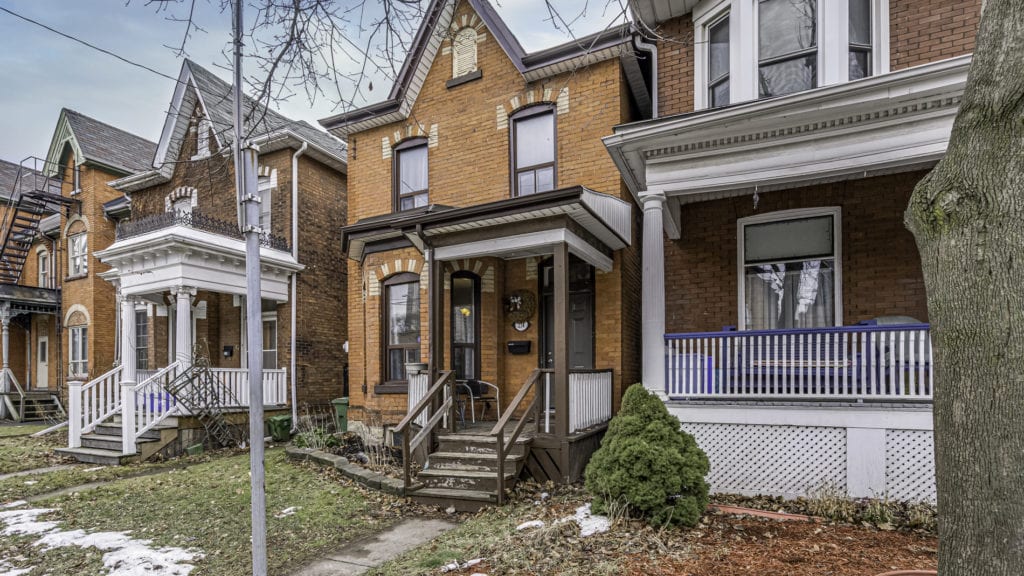
Sales declined further in November according to the Realtors® Association of Hamilton-Burlington, resulting in one of the weakest Novembers in 13 years. Year-to-date sales in the area were down 11% over last year.
New listings trended downward this month, however, there were still 1,384 new listings reported, which helped elevate inventory levels past traditional numbers for November. According to the RAHB, this is still trending down over last month, but with 2,728 active listings last month, inventory in the region is 23% higher than it was in 2022.
RAHB President, Nicolas von Bredow attributed these declining sales to the “persistently high lending rates” currently impacting demand and supporting new listings. He says much of the existing growth has been in the higher-end market.
The unadjusted benchmark price for Hamilton-Burlington was $805,700, which is nearly 3% lower than last year and last month.
Are you subscribed to the St. Jean Report? Get weekly real estate news and insights delivered right to your inbox Subscribe here.
Let’s take a closer look at what happened in the local real estate market last month:
Hamilton Market Activity
| Variable | 2023 | Difference |
|---|---|---|
| Sales Activity | 404 | -6.9% |
| New Listings | 883 | 10.9% |
| Active Listings | 1,695 | 26.3% |
| Months of Inventory | 4.2 | 35.7% |
| Average Price | $755,953 | -0.7% |
| Median Price | $699,900 | -1.7% |
| Average Days on Market | 30.0 | 4.5% |
Burlington Market Activity
| Variable | 2023 | Difference |
|---|---|---|
| Sales Activity | 138 | -4.8% |
| New Listings | 263 | 18.5% |
| Active Listings | 474 | 19.1% |
| Months of Inventory | 3.4 | 25.1% |
| Average Price | $1,035,904 | 6.1% |
| Median Price | $912,500 | 1.6% |
| Average Days on Market | 29.3 | -3.9% |
The real estate market is always changing. Before buying or selling, make sure you’re up-to-date on the latest insights. Read our past market report blogs right here.
Sales Activity
There were 404 sales reported in Hamilton last month, a decline of 6.9% year-over-year. In Burlington, there were 138 sales, which was down 4.8% over last year.
New Listings
Hamilton had 883 new listings hit the market last month, up 10.9% year-over-year. Burlington saw a greater leap of 18.5% up over last year with 263 new listings.
Active Listings
Although inventory is trending downward month-over-month, as is normal for this time of year, active listings are significantly higher year-over-year. There were 1,695 active listings in Hamilton last month, up 26.3% over last year. Burlington had 474 active listings last month, up 19.1% over November 2022.
Months of Inventory
Months of inventory in Hamilton reached 4.2 last month, an increase of 35.7%. Burlington had 3.4 months of inventory, which was also up 25.1%. Months of inventory is often used as a measure to determine the type of market we are currently in. Anything above 3 months is considered to be a “buyer’s market.”
Average Days on Market
In Hamilton we saw 30 days on the market on average (up 4.5% year-over-year) while Burlington’s average days on the market was down 3.9% to 29.3.
Average Prices
The average residential price in Hamilton in November was $755,953, which is down 0.7% year-over-year. In Burlington, the average residential price for November was up 6.1% resting at $1,035,904.
In the News
The Bank of Canada recently announced a hold on interest rates for the third consecutive month. The rate remained unchanged at 5%, which is still the highest interest rate since 2001. BOC officials say the economy is no longer in “excess demand” and the rate hiking campaign over the past year is working to slow the economy and reduce inflation. However, despite acknowledging that the rate hikes are working, the central bank is still “leaving the door open” for further hikes as they monitor inflation.
Canada’s economy unexpectedly contracted 1.1% in the third quarter. Consumption has “flatlined” and many economists see this as confirmation of the Bank of Canada’s interest rate hikes halting economic growth. Preliminary numbers from Statistics Canada suggest that the country’s GDP rose in October, however recent numbers point to a weakened economy.
However, experts agree that the current interest rate in Canada is not sustainable, as household debt continues to grow and financial bank statements show increasing provisions for bad loans. Household debt in Canada is currently reaching similar levels seen before recessions in 1990, 2000, and 2008.
A new report from Scotiabank noted that Canadians with variable-rate mortgages have cut their household spending by over twice as much as those with fixed-rate mortgages. Variable-rate mortgage holders have already experienced the crunch of rising interest rates, cutting spending by 11% while fixed-rate mortgage holders have only cut spending by about 5%, however, their rate increases will come into effect when they renew their mortgages in the coming years.
Economists at TD Bank are predicting that home prices will fall twice as much as previously stated with high borrowing costs and a “surge in listings puts more downward pressure on the market.” Last month, TD estimated that home prices would dip 5% in the first quarter of 2024, which they have now updated to 10% in a note published last week.
A Look at What’s to Come
Sales in the area declined further last month, resulting in one of the weakest Novembers in 13 years. Housing affordability has pushed many buyers out of the market while listing inventory continued to grow year-over-year.
As we head into the holiday season, a traditionally slow market for real estate, the Bank of Canada announced a hold on interest rates. The policy rate remained at 5% for the third consecutive month as all economic signals point to stalled growth and a slowing economy.
While the Bank of Canada remains committed to curbing inflation, it would appear the rate-hiking campaign has done its job. Experts are now betting on interest rate cuts to happen even sooner than expected, possibly as early as March 2024.
Are you thinking about making a real estate move in the near future? Call us at 1-844-484-SOLD or email us here for everything you need to know about buying and selling in this market.



